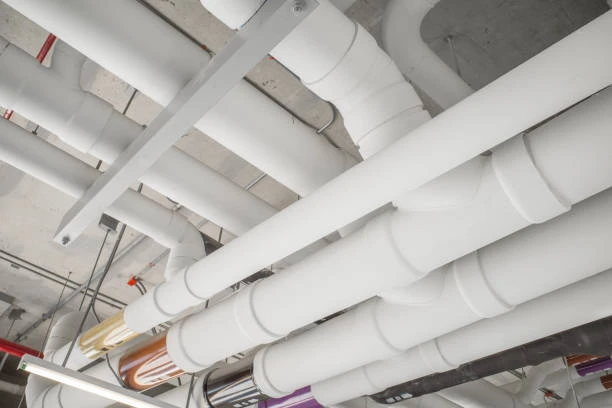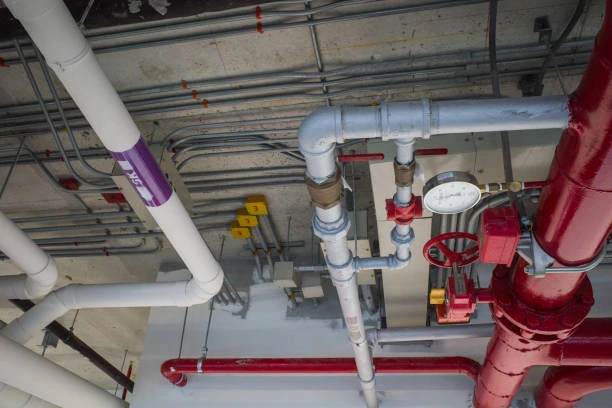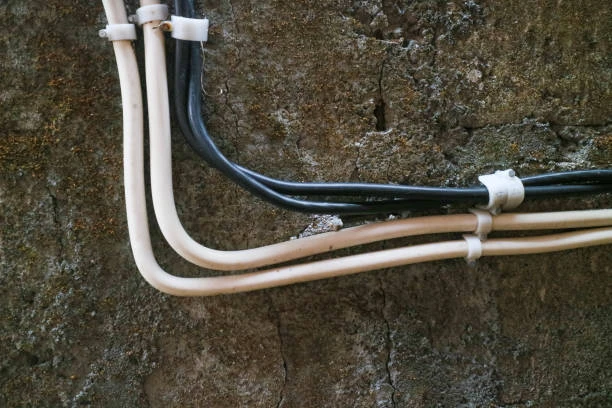Introduction: Understanding the Role of Copper Ball Valves in High-Pressure Steam Systems
Efficient control of pressure in steam pipelines is essential for both safety and performance. While several types of valves are used in industrial systems, copper ball valves stand out for their durability and high resistance to temperature and pressure. Unlike a specialised lpg reduction valve, which primarily controls gas pressure in storage or delivery systems, copper ball valves are widely used in steam pipelines to manage water and steam flow with exceptional reliability.
This article examines the pressure-resistance features of copper ball valves in steam applications. We’ll explore their key characteristics, suitable applications, how to choose the right model, installation guidance, and a comparison with plastic valves. Whether you’re in HVAC, manufacturing, or facility management, understanding the value of copper ball valves in steam systems is crucial.
Frequently Asked Questions (FAQ)
1. Can copper ball valves handle steam pressure?
Yes, high-quality copper ball valves are designed to tolerate the high pressure and temperature found in steam pipelines, making them suitable for many industrial and residential heating systems.
2. What is the difference between a copper ball valve and an LPG reduction valve?
A copper ball valve controls liquid or gas flow with a rotating ball mechanism. An LPG reduction valve, on the other hand, reduces and regulates gas pressure from a cylinder or tank. They serve different functions but are both critical in pressure control.
3. What pressure can copper ball valves typically handle?
Most copper ball valves can operate up to 40 bar, depending on their size and material quality. Some heavy-duty models can withstand even higher pressures under industrial standards.
4. Do copper ball valves corrode under steam exposure?
No, copper and brass valves offer excellent corrosion resistance, especially when they include dezincification-resistant (DZR) components that withstand both pressure and chemical exposure.
5. Are copper ball valves better than plastic ones for steam?
Yes. Plastic valves generally deform under high heat, while copper ball valves maintain structural integrity, making them far more reliable for steam systems.
Copper Ball Valves: Definition and Key Characteristics
A copper ball valve is a type of shut-off valve that uses a rotating ball with a hole through it to control the flow of steam, water, or gas. When the valve handle is turned 90 degrees, the ball rotates to open or close the passage.
Key Features:
High Pressure Tolerance: With operating pressure ratings often reaching 16–40 bar, copper ball valves can withstand the demanding environment of steam systems.
Temperature Stability: Copper ball valves remain stable at temperatures exceeding 120°C, depending on the sealing material used.
Fast Flow Control: A quarter-turn design enables quick isolation, allowing for efficient maintenance or emergency shutdowns.
Corrosion Resistance: The copper alloy resists oxidation and internal wear, particularly under high-temperature conditions.
Low Maintenance: With fewer moving parts, these valves offer long-term performance with minimal upkeep.
These qualities make copper ball valves particularly effective for applications that involve both high pressure and high temperature—conditions where a LPG reduction valve would be unsuitable due to its specific design for LPG systems.
Common Applications and Industry Use Cases
Copper ball valves are used in a broad range of steam-related and high-pressure environments. Their ability to perform under stress makes them a popular choice across industries.
Key Applications:
Steam Heating Systems: For centralised building heating and industrial heating circuits.
Boiler Pipework: To isolate sections for maintenance or control flow to heat exchangers.
Autoclaves and Sterilisation Equipment: Where precise steam regulation is critical.
Hot Water Circulation: In both commercial and domestic buildings.
HVAC Systems: Including underfloor heating loops and rooftop steam equipment.
Industries Benefiting from Copper Ball Valves:
Power generation
Chemical manufacturing
Food processing
Textile plants
Commercial HVAC and building management
Although LPG reduction valves serve essential roles in gas systems, copper ball valves take the lead in liquid and steam-heavy installations, especially where higher pressure and temperature are present.
Selection Guide: How to Choose the Right Copper Ball Valve
Choosing the right valve is crucial for long-term reliability, safety, and system efficiency. Here’s what to look for:
1. Material Quality
Opt for valves made with high-purity copper or DZR brass, which are highly resistant to corrosion and scale formation. Avoid low-cost brass valves with high zinc content, as these may suffer from dezincification over time.
2. Valve Size
Ensure the valve size matches the pipeline diameter. Common industrial sizes range from 15mm to 50mm or larger for high-flow systems. Undersized valves can restrict flow, while oversized ones increase cost without added benefit.
3. Seal Material
Select PTFE (Teflon) or EPDM seals for high-temperature compatibility. These materials prevent leaks and withstand thermal cycling in steam environments.
4. Handle Design
Use insulated or lockable handles for safety. Insulated handles prevent burns, while lockable ones improve security in restricted areas or public buildings.
5. Certifications
Ensure compliance with relevant standards such as ISO, EN, or ASTM. These confirm the valve’s performance under regulated pressure and temperature limits.
Installation Guidelines: Best Practices for Steam Environments
Proper installation ensures that the copper ball valve performs effectively throughout its service life. Below are essential tips:
Clean All Connection Surfaces: Remove burrs and debris before installation to prevent internal damage or leaks.
Use the Correct Thread Sealant: PTFE tape or steam-rated sealant prevents thread leaks under high pressure.
Align Properly: The valve should be installed in the direction of flow where indicated.
Support Pipe Weight: Never let the valve bear pipe stress—use pipe hangers or brackets.
Pressure-Test After Installation: Always test the system at working pressure to detect any faults before operation.
Avoid installing valves too close to extreme heat sources unless rated accordingly. Consider additional insulation to protect the valve body and operator.
Copper Ball Valves vs Plastic Valves – A Practical Comparison
| Feature | Copper Ball Valve | Plastic Valve (e.g., PVC, PP) |
|---|---|---|
| Temperature Resistance | High – up to 120°C or more | Low – typically under 60°C |
| Pressure Tolerance | Up to 40 bar in industrial models | Usually 10–16 bar |
| Corrosion Resistance | Excellent (especially DZR brass) | Very good in chemical but not high-temp setups |
| Durability | 15–25 years in high-pressure systems | 5–10 years under moderate conditions |
| Maintenance Needs | Low | Moderate – may degrade faster under heat |
| Cost | Higher initial investment | Lower upfront cost |
| Steam Compatibility | Excellent | Not recommended |
| Typical Use | Steam, heating, pressurised water | Cold water, low-pressure systems |
This comparison clearly shows that for high-temperature, high-pressure applications like steam pipelines, copper ball valves are far superior to plastic options.
Conclusion
When managing pressure and flow in steam systems, selecting the right valve is not just about control—it’s about safety, efficiency, and system longevity. Copper ball valves offer an excellent combination of pressure resistance, thermal stability, and corrosion protection, making them the preferred choice in steam pipeline applications.
While valves like the LPG reduction valve are ideal for regulating liquefied petroleum gas, they are not built for steam. Copper ball valves, on the other hand, are purpose-built for such demanding environments. Their robust design and material composition ensure optimal performance in heating plants, manufacturing units, and other pressure-intense systems.
Connect
IFAN is a trusted Chinese manufacturer with 30 years of experience in producing copper valves, fittings, and plastic piping systems. Our wide range of copper ball valves is designed to meet the demanding requirements of global plumbing, gas, and heating systems.
If you’re interested in copper valves, LPG-compatible components, or a complete piping solution, feel free to reach out. IFAN offers competitive pricing and high-quality products for international markets.
- For more information,pls visit our webside https://waterpipefitting.com/
Pls Mailto: [email protected]
Whatsapp: +86 15088288323
We reply to emails and faxes within 24 hours. You can also contact us directly for urgent assistance.
IFAN Product International Standards
To ensure consistent quality across applications, IFAN products strictly adhere to various global certifications and standards, including:
ISO 15874, EN 15874, ASTM F2389, DIN 8077/8078, GB/T 18742, ISO 15494, EN ISO 15494, ASTM D1785 SCH40/80, GB/T 10002, CSA B137.6, AS/NZS 1477, JIS K6741, and many more national and industrial standards.
Our products are engineered to serve in the most demanding conditions while maintaining affordability, precision, and durability.














Recent Comments